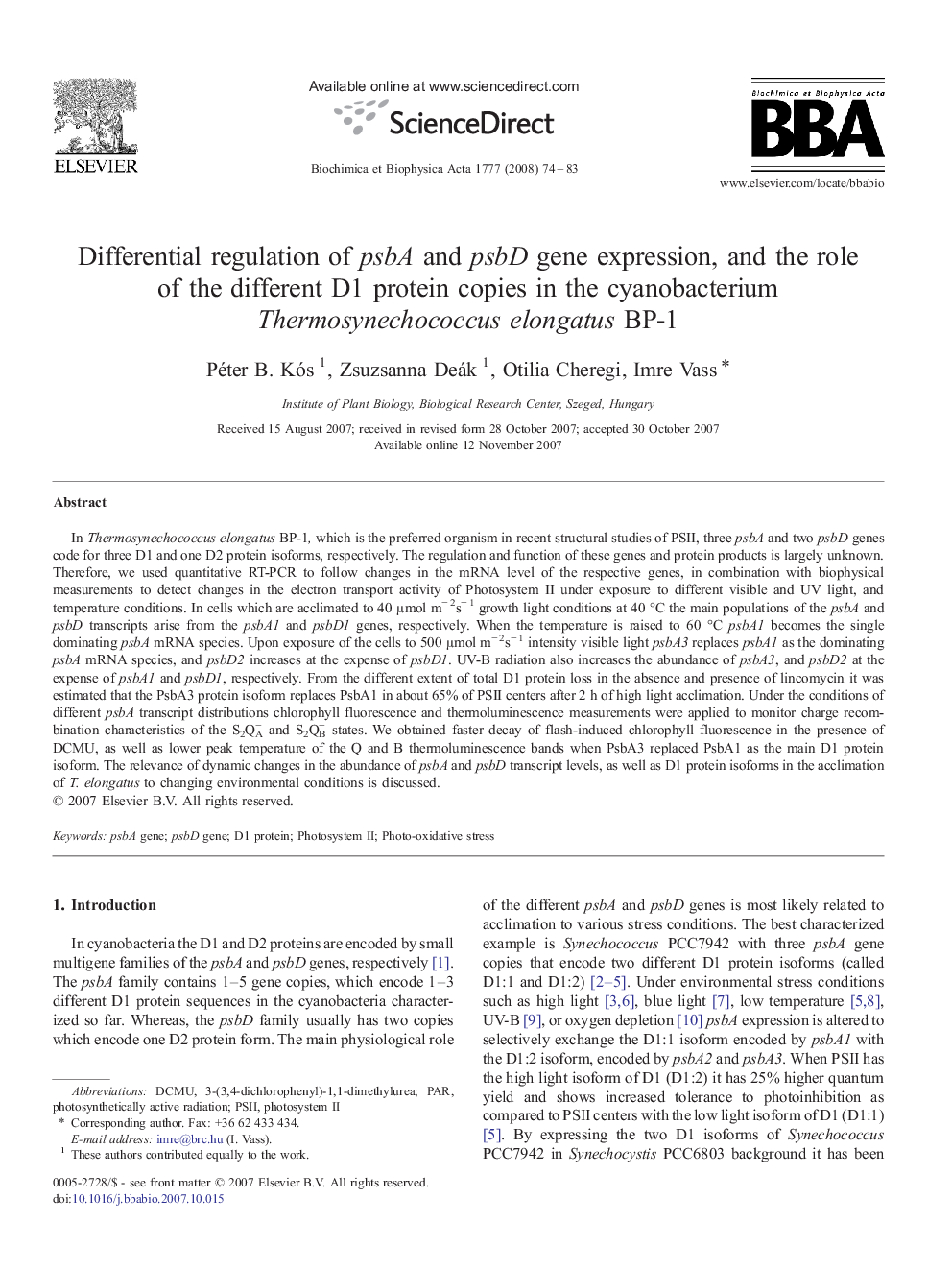| Article ID | Journal | Published Year | Pages | File Type |
|---|---|---|---|---|
| 1943434 | Biochimica et Biophysica Acta (BBA) - Bioenergetics | 2008 | 10 Pages |
In Thermosynechococcus elongatus BP-1, which is the preferred organism in recent structural studies of PSII, three psbA and two psbD genes code for three D1 and one D2 protein isoforms, respectively. The regulation and function of these genes and protein products is largely unknown. Therefore, we used quantitative RT-PCR to follow changes in the mRNA level of the respective genes, in combination with biophysical measurements to detect changes in the electron transport activity of Photosystem II under exposure to different visible and UV light, and temperature conditions. In cells which are acclimated to 40 μmol m− 2s− 1 growth light conditions at 40 °C the main populations of the psbA and psbD transcripts arise from the psbA1 and psbD1 genes, respectively. When the temperature is raised to 60 °C psbA1 becomes the single dominating psbA mRNA species. Upon exposure of the cells to 500 μmol m− 2s− 1 intensity visible light psbA3 replaces psbA1 as the dominating psbA mRNA species, and psbD2 increases at the expense of psbD1. UV-B radiation also increases the abundance of psbA3, and psbD2 at the expense of psbA1 and psbD1, respectively. From the different extent of total D1 protein loss in the absence and presence of lincomycin it was estimated that the PsbA3 protein isoform replaces PsbA1 in about 65% of PSII centers after 2 h of high light acclimation. Under the conditions of different psbA transcript distributions chlorophyll fluorescence and thermoluminescence measurements were applied to monitor charge recombination characteristics of the S2QA− and S2QB− states. We obtained faster decay of flash-induced chlorophyll fluorescence in the presence of DCMU, as well as lower peak temperature of the Q and B thermoluminescence bands when PsbA3 replaced PsbA1 as the main D1 protein isoform. The relevance of dynamic changes in the abundance of psbA and psbD transcript levels, as well as D1 protein isoforms in the acclimation of T. elongatus to changing environmental conditions is discussed.
